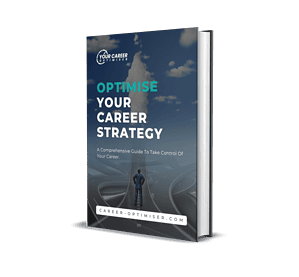Learn how to optimise your CV for Applicant Tracking Systems (ATS) to increase your chances of landing an interview in...
READ MOREHow To Analyse Job Descriptions: Your Guide to Landing More Interviews
Reading Time: 10 minutes
Have you ever found yourself pouring over job application after job application, customising your CV, crafting the perfect cover letter, only to hear nothing back? The radio silence can be disheartening, can’t it? You’re not alone in this, and more importantly, it’s not a reflection of your skills or potential. It’s often an indicator that there’s something amiss in how we approach job descriptions.
Job descriptions are more than just laundry lists of responsibilities and requirements—they’re a goldmine of information. They are your first glimpse into the employer’s mind, giving you insight into what they truly value and expect from the ideal candidate. The ability to decode these descriptions can dramatically increase your chances of getting noticed and, ultimately, landing an interview.
In this blog post, I am going to unravel the mystery of job descriptions. We’ll explore why they’re so crucial, break down their typical structure, and most importantly, guide you on how to use this information effectively. We’ll delve into each section of a job description, explain its purpose, and provide actionable strategies to help you stand out from the crowd.
So, if you’re ready to transform your job search process and secure more interviews, let’s dive in!
Table of Contents
Breaking Down a Job Description
At first glance, a job description can appear to be a dense block of text, a hodgepodge of duties, and a laundry list of desired qualifications. But when we break it down, we can see that it is typically composed of a few distinct sections, each with its own purpose and importance. Let’s demystify these sections together:
- Job Title: This is more than just a label. It’s a snapshot of the role and often indicates the level of seniority and area of focus. It’s vital to understand what the job title entails in your industry as it could vary across sectors.
- Company Overview: Often overlooked, this section provides insight into the company’s mission, culture, and values. It’s a glimpse into where you might be working and can indicate if you’ll align with the company’s ethos and ways of working.
- Responsibilities: This section outlines what you’ll be doing on a day-to-day basis. It’s key to understand these responsibilities to gauge if you’re up for the tasks and if they align with your career aspirations. Identify the skills which are crucial and essential.
- Qualifications: These are the skills, experience, and education the employer is looking for. Here lies the opportunity to see how your background aligns with the role and what you may need to highlight in your application.
- Nice-to-Haves: These are not deal-breakers but having them could give you an edge over other candidates. If you possess these, make sure to highlight them in your application.
- Application Process: This section details how to apply and may include specific instructions. Following these to the letter shows your attention to detail and ability to follow instructions.
By understanding these sections, you’ve taken the first step to decode job descriptions. In the upcoming sections, we’ll delve into how to use this information effectively to increase your chances of securing an interview.

How to Use Each Section to Your Advantage
Now that we’ve broken down a job description into its constituent parts, let’s take it a step further and explore how we can use each section to our advantage:
- Job Title: Using accurate and relevant job titles in your CV and LinkedIn profile can help you appear in more searches by recruiters. For example, if you’re a “Sales Manager” applying for a “Business Development Manager” role, consider updating your profile and CV to reflect both titles, as they often require similar skills.
- Company Overview: Show that you’re not just a good fit for the role, but for the company too. For instance, if the company emphasises its commitment to sustainability, you could mention your own passion for environmental initiatives in your cover letter.
- Responsibilities: Use this section to tailor your CV. For example, if the role requires managing a team, highlight your experience in team management and any successes you’ve achieved in this area.
- Qualifications: Reflect these in your application. If the job description calls for “strong analytical skills”, provide concrete examples in your CV and cover letter demonstrating how you’ve used these skills in previous roles.
- Nice-to-Haves: If you have these additional skills or experiences, make sure to highlight them. For example, if the job description mentions that knowledge of a foreign language is a plus, and you’re fluent in French, be sure to include this in your application.
- Application Process: Follow the instructions provided. If they ask for a cover letter, include one. If they want the CV in a particular format, provide it as such. This is an easy way to show that you’re attentive and can follow directions.
Let’s illustrate with a case study. Meet John, a marketing professional. He found a role he was excited about but was initially getting no responses. After attending a CV writing workshop, he learned about the importance of analysing job descriptions. He revisited the job description and tailored his CV to reflect the responsibilities and qualifications mentioned. He also highlighted his experience in “content creation”, a nice-to-have mentioned in the description. The result? He got a call for an interview within a week.
By harnessing the information provided in job descriptions, you can make your application stand out, just like John. In the next section, we’ll delve into the ‘hidden’ requirements that are often overlooked but can make all the difference.
Uncovering the 'Hidden' Requirements
Have you ever felt like there’s an undercurrent of expectations in a job description, things not explicitly stated but seemingly important? You’re not imagining things. Job descriptions often contain ‘hidden’ requirements – subtle hints about the company culture, values, and the kind of person they’re looking to hire.
Deciphering these unwritten expectations can give you a competitive edge. It allows you to showcase not just your skills and qualifications, but also your potential fit within the team and the company. So, how do you spot these ‘hidden’ requirements and align your application accordingly?
- Read between the lines: Look for adjectives and phrases used in the job description. Terms like ‘fast-paced environment’, ‘independent worker’, or ‘collaborative team’ provide insight into the work culture and the kind of personality traits the employer values.
- Research the company: Go beyond the job description. Look at the company’s website, social media pages, and any recent news articles about them. This can help you understand their culture, values, and initiatives.
- Align your application: Reflect the company’s language and values in your CV and cover letter. If a company describes itself as ‘innovative’ and ‘driven’, mention projects where you’ve demonstrated these qualities.
- Use your network: If you know someone who works or has worked at the company, they can be a valuable source of insider information about the company culture and expectations.
Let’s look at an example. Lisa, a project manager, was applying for a role at a med tech start-up. The job description mentioned a ‘dynamic, agile environment’. Lisa understood this as a hint towards a fast-paced work culture and the need for adaptability. In her cover letter, Lisa highlighted instances where she had successfully managed projects under tight deadlines and rapidly changing conditions. By aligning her application with these ‘hidden’ requirements, Lisa demonstrated her potential fit within the company, making her application stand out.
Uncovering these ‘hidden’ requirements can make your application more compelling and increase your chances of landing an interview. In the next section, we’ll explore how to master keyword optimisation, another crucial element of job description analysis.

Mastering Keyword Optimisation
In the digital age, the first hurdle in the job application process isn’t a human—it’s an Applicant Tracking System (ATS). An ATS is a software used by many companies to sort and rank applications. One major factor it considers? Keywords. Yes, those relevant terms and phrases scattered throughout job descriptions.
Keywords in job descriptions are like signposts, guiding you towards what the employer is looking for. They’re often specific skills, qualifications, or areas of expertise. By integrating these keywords into your CV and LinkedIn profile, you become more visible to both an ATS and recruiters.
So, how do you go about identifying and using these keywords?
- Identify the keywords: Look for repeated skills or qualifications in the job description. These are likely to be the keywords the employer considers important.
- Integrate them into your application: Once identified, incorporate these keywords into your CV and LinkedIn profile. Make sure to use them in context, demonstrating your proficiency in those areas.
- Use them in your cover letter: While cover letters aren’t typically scanned by an ATS, using keywords can help highlight your fit for the role to the recruiter.
According to a study by Jobscan, an optimised CV is 30% more likely to be picked up by an ATS, and candidates who used keyword optimisation saw a 75% increase in interviews.
Consider Jeremy, a digital marketer. He noticed that the job descriptions for roles he was interested in often mentioned ‘SEO’, ‘content marketing’, and ‘Google Analytics’. Jeremy integrated these keywords into his CV and LinkedIn profile, making sure to highlight his achievements in these areas. The result? Jeremy ‘s interview calls tripled!
Mastering keyword optimisation is an essential part of leveraging job descriptions to your advantage. In the final section, we’ll wrap up with how analysing job descriptions can transform your job search process.

Using Job Descriptions to Prepare for Interviews
The value of analysing job descriptions extends beyond tailoring your CV and cover letter—it’s also a powerful tool for interview preparation. The job description can offer valuable clues about what the interviewer might ask and what they’re looking for in a candidate.
Here’s how you can use a job description to prepare for an interview:
- Anticipate interview questions: Many interview questions are based on the responsibilities and qualifications listed in the job description. For each requirement, prepare an example of how you’ve demonstrated that skill or qualification in a previous role.
- Understand the company’s priorities: The emphasis placed on certain aspects of the job description can indicate what the company values. If ‘team collaboration’ is mentioned multiple times, expect questions about your teamwork skills.
- Prepare your own questions: Show your interest and enthusiasm for the role by asking insightful questions related to the job description.
Let’s consider James, a finance manager. He was preparing for an interview with a company that highlighted ‘strategic planning’ and ‘budget management’ in the job description. James anticipated questions around these areas and prepared examples of how he successfully implemented strategic planning and managed budgets in his previous roles. During the interview, he was asked about these very topics, and his well-prepared responses impressed the interviewers. James credits his success in the interview to his thorough analysis of the job description.
By leveraging the information in job descriptions, you can walk into interviews feeling well-prepared and confident. In the conclusion, we’ll summarise the key points about how effective job description analysis can revolutionise your job search journey.
What is your Social Selling Index Score? Learn how to use this tool to enhance your career opportunities on LinkedIn.
Final Thoughts
Through the lens of effective job description analysis, your approach to job applications and interviews can transform. We’ve journeyed together through the importance of understanding job descriptions, the breakdown of their sections, and how to leverage this information to your advantage.
We’ve uncovered the ‘hidden’ requirements and mastered keyword optimisation, increasing the chances of your application being noticed. And finally, we’ve discussed how this analysis can empower your interview preparation, giving you a distinct edge.
Now, it’s over to you. The next job description you encounter isn’t just a list of responsibilities and requirements – it’s a roadmap guiding you to craft an impactful application and perform well in interviews.
Every job application is a stepping stone towards your career goals. By understanding and effectively analysing job descriptions, you’re not just applying for jobs – you’re strategically advancing your career. Good luck!

CAREER REFRESHER - £597
Refresh, reset, and reboot your career with my 6-week Career Refresh Programme.
Designed for ambitious professionals who are early to mid-career that want to advance their careers. Whether you are stuck in a stagnant role, unable to get a promotion or negotiate a better salary, we show you how to take control of your career.
Let's Work Together And Optimise Your Career

I have spent the last 10 years supporting companies ranging from start-ups to Fortune 500 companies to find and the best talent around the world.
During this time, I have:



For the past 5 years I have been developing best practices and solutions to help good people have great careers and have developed 3 Career Coaching Programmes suitable for all professionals.
Are you interested in working with me?
Best of luck,
Dave Crumby
Your Career Optimiser | Certified Leadership and Management Consultant
🏆 Winner of Career Development Specialists of The Year 2023
🏆 Winner of Most Supportive Career Branding Service 2022
MORE INSIGHTS TO OPTIMISE YOUR CAREER
Meet the UK's top CV writers, dedicated professionals who focus on presenting your skills and experiences in a way that...
READ MOREUnlock the secrets to a successful job search in 2024 with our guide on crafting an AI-optimised LinkedIn profile. Learn...
READ MOREDiscover how recruiters search for candidates on LinkedIn with insights from a seasoned recruitment expert. Learn key strategies for optimizing...
READ MORE




